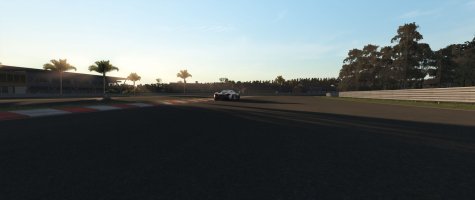Bunch of bad geometry as evident from the screwy reflections/bumps, but I THINK this is a more realistic topo for the front end. Not anywhere close to where I'd want it though.
View attachment 285597
I'm mostly working off pictures of glass headlight covers to get an idea for how it should flow. Connecting it to the bumper, mainly because of the curve on the side, is proving a bit challenging. Should I just model them separately?
View attachment 285598
I'm sure the experienced modellers here are scratching their head, but I've never modelled anything this organic. Strictly props and nice, easy to understand angles and forms up to now.
I think I'll take a break for now and see what people have to say.
EDIT: What kind of limit to good reflections is there working in polygons? I never really looked closely at real-time cars in games. To my understanding, you can't really get NURBS-like reflections with polygons no matter how dense or clean the mesh, so should "fixing reflections" be something done near the end, without too much worry about it? Or should I always keep reflections in mind when modeling the base mesh?











